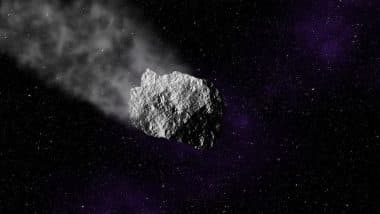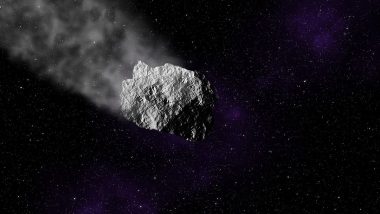Asteroids have always been a subject of fascination and fear. Among them, Apophis, named after the ancient Egyptian god of chaos and destruction, has captured significant attention due to its potentially catastrophic trajectory. This massive asteroid, known as the ‘God of Destruction,’ with a diameter of around 340 metres, has been closely monitored by scientists worldwide due to its projected close approach to Earth in 2029. This celestial event allows scientists to study the asteroid closely rather than to save the planet from imminent doom. But just how dangerous is Apophis, and should we be concerned?
A Closer Look at Apophis
Apophis was discovered in 2004, and early calculations suggested a small chance of impact with Earth in 2029. This led to widespread concern, as the potential devastation from an impact would be catastrophic. However, further observations and refined calculations have significantly reduced the probability of a collision. Scientists now assure us that while Apophis will come extremely close—within 32,000 kilometres (20,000 miles) of Earth—it will not strike our planet during this flyby.
The 2029 Flyby: A Historic Event
Despite the reduced risk of impact, the 2029 flyby will be a historic and extraordinary event. On April 13, 2029, Apophis will be visible to the naked eye as it passes by Earth. It will provide a spectacular sight in the sky over the Eastern Hemisphere, visible from parts of Europe, Africa, and Western Asia as a bright point of light, similar in brightness to the fast-moving star. This will be the closest approach by such a large asteroid in recorded history, offering a unique opportunity for scientists to study its characteristics and behaviour.
Scientific Missions and Observations
The upcoming close flyby of Apophis offers scientists a rare and valuable opportunity to deepen our knowledge of asteroids. NASA has rebranded its OSIRIS-REx spacecraft, which recently returned samples from asteroid Bennu, as the OSIRIS-APEX mission. This mission is set to meet Apophis in June 2029, with plans to study the asteroid for 18 months. During this time, OSIRIS-APEX will create detailed maps of Apophis' surface and analyze its chemical composition, providing critical insights into the asteroid's structure and history.
The European Space Agency (ESA) is also preparing for this event with a mission named Ramses. This mission will observe Apophis as it approaches Earth, focusing on how Earth's gravity influences the asteroid. The data gathered by Ramses will help scientists understand how close encounters with planets can change an asteroid's surface and rotation. This information is vital for developing future planetary defense strategies.
Should We Be Concerned?
While the 2029 flyby poses no direct threat, Apophis will continue to be monitored closely. Its orbit around the sun means it will return to Earth's vicinity in the future. The gravitational effects of the 2029 encounter could alter its path, making future predictions about its trajectory essential. Currently, scientists are confident that there is no significant risk of impact in the foreseeable future, but continuous observation is necessary to rule out any long-term danger.
Asteroid Apophis, once feared as a ‘God of Destruction,’ will make a remarkable flyby of Earth in 2029. While scientists have ruled out the possibility of an impact during this event, the close approach will provide invaluable data for future asteroid research. Apophis reminds us of the importance of continued vigilance and preparation in safeguarding our planet from potential cosmic threats.
(The above story first appeared on LatestLY on Aug 22, 2024 10:53 AM IST. For more news and updates on politics, world, sports, entertainment and lifestyle, log on to our website latestly.com).












 Quickly
Quickly




















